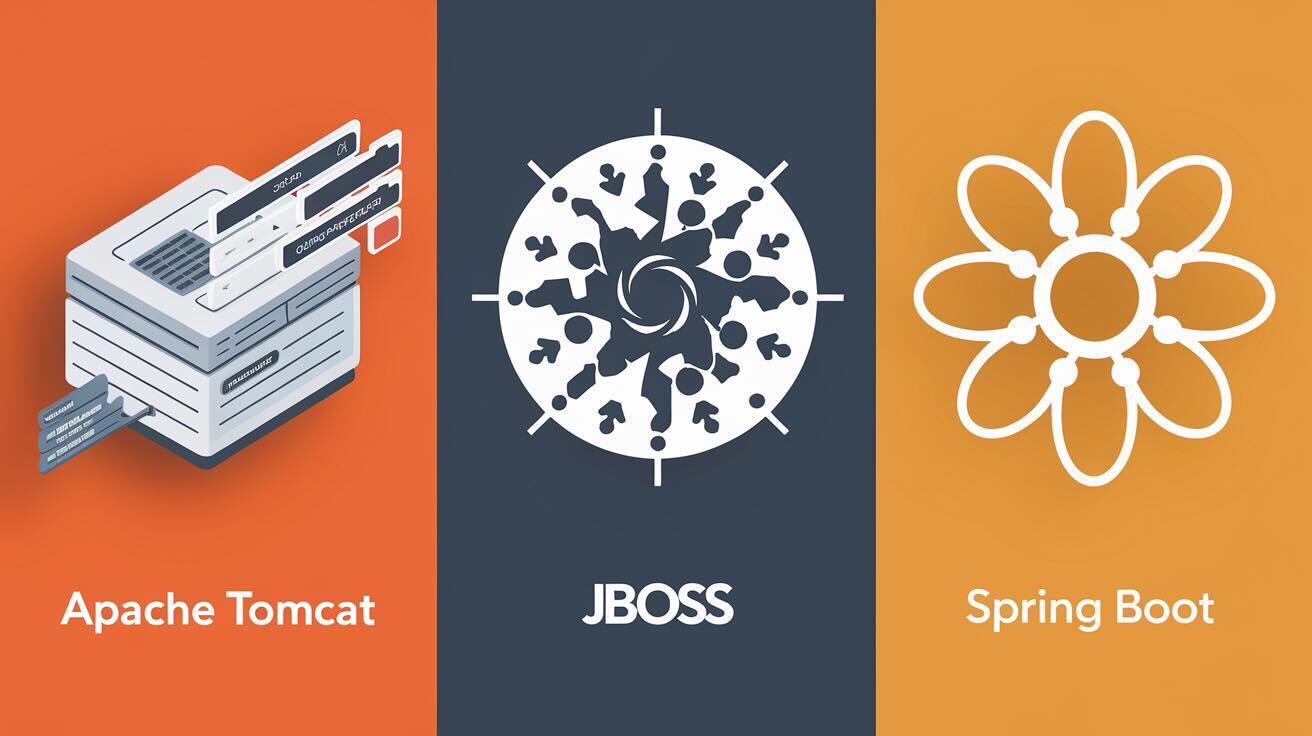When it comes to deploying Java applications, choosing the right application server and build tools can make a significant difference in performance, scalability, and overall application efficiency. In this comprehensive guide, we'll dive deep into the most popular Java application servers, build tools, and deployment strategies.
Top Java Application Servers Compared
1. Apache Tomcat
Pros:
- Lightweight and easy to configure
- Minimal resource consumption
- Open-source and widely used
- Excellent for smaller to medium-sized applications
Cons:
- Limited enterprise features
- Less robust clustering capabilities
- Minimal built-in security features
Performance Benchmark:
- Average request handling: 2,500-3,500 requests/second
- Memory footprint: 150-250 MB
- Ideal for: Simple web applications, microservices
2. WildFly (JBoss)
Pros:
- Full Java EE compliance
- Robust enterprise features
- Modular architecture
- Excellent for complex, enterprise-level applications
Cons:
- Higher resource consumption
- More complex configuration
- Steeper learning curve
Performance Benchmark:
- Average request handling: 3,800-4,500 requests/second
- Memory footprint: 500-700 MB
- Ideal for: Large enterprise applications, microservices architectures
3. Spring Boot Embedded Server
Pros:
- Extremely lightweight
- Easy configuration
- Integrated with Spring ecosystem
- Rapid development and deployment
Cons:
- Limited to Spring-based applications
- Less suitable for complex enterprise scenarios
Performance Benchmark:
- Average request handling: 3,000-4,000 requests/second
- Memory footprint: 100-250 MB
- Ideal for: Microservices, cloud-native applications
4. IBM WebSphere
Pros:
- Enterprise-grade reliability
- Advanced security features
- Comprehensive monitoring tools
- Strong support for complex transactions
Cons:
- Expensive licensing
- High resource requirements
- Complex configuration
Performance Benchmark:
- Average request handling: 4,500-5,500 requests/second
- Memory footprint: 800-1200 MB
- Ideal for: Large-scale enterprise applications
Performance Comparison Matrix

Maven: The Backbone of Java Build and Deployment
What is Maven?
Apache Maven is a crucial tool in the Java ecosystem, providing powerful build automation and project management capabilities. While not an application server itself, Maven plays a critical role in Java application deployment strategies.
Key Maven Features
- Dependency Management: Automatically downloads and manages project dependencies
- Build Standardization: Provides a uniform build system across projects
- Project Structure: Enforces a standard project layout
- Plugin Ecosystem: Extensive plugin support for various build and deployment tasks
Maven and Application Server Integration
Maven seamlessly integrates with most Java application servers, offering:
- Simplified deployment configurations
- Easy WAR/JAR file generation
- Automated testing and build processes
- Continuous Integration (CI) support
Deployment Plugins for Different Servers
1- Tomcat Maven Plugin
<plugin>
<groupId>org.apache.tomcat.maven</groupId>
<artifactId>tomcat7-maven-plugin</artifactId>
<configuration>
<url>http://localhost:8080/manager/text</url>
</configuration>
</plugin>
2- WildFly Maven Plugin
<plugin>
<groupId>org.wildfly.plugins</groupId>
<artifactId>wildfly-maven-plugin</artifactId>
<configuration>
<hostname>localhost</hostname>
<port>9990</port>
</configuration>
</plugin>
Deployment Workflow Example
# Clean and package the application
mvn clean package
# Deploy to Tomcat
mvn tomcat7:deploy
# Deploy to WildFly
mvn wildfly:deploy
Deployment Considerations
When selecting an application server, consider:
- Application complexity
- Expected traffic volume
- Resource constraints
- Budget
- Scalability requirements
Best Practices for Java Deployment
- Use containerization (Docker/Kubernetes)
- Implement proper load balancing
- Optimize JVM settings
- Use performance monitoring tools
- Implement caching strategies
- Leverage Maven for consistent builds
- Use environment-specific configurations
Maven Best Practices
- Use consistent dependency versions
- Leverage Maven profiles for different environments
- Implement automated testing
- Use Maven for continuous integration
- Optimize build performance
Conclusion
Each application server and build tool has its strengths and ideal use cases. At DeployHQ, we recommend:
- Small projects: Apache Tomcat + Maven
- Medium projects: WildFly with Maven
- Large enterprise projects: WebSphere or WildFly with comprehensive Maven configurations
Recommendations from DeployHQ
Want to streamline your Java application deployment? DeployHQ offers seamless integration with:
- All major Java application servers
- Maven build processes
- Comprehensive deployment workflows
Our platform provides:
- Automated deployment
- Zero-downtime updates
- Easy rollback capabilities
- Direct Maven build support
- Environment-specific configuration management
DeployHQ now supports all major releases of Java OpenJDK (OpenJDK 8, OpenJDK 11, OpenJDK 17, and OpenJDK 21) and Maven out of the box.
Happy deploying!
